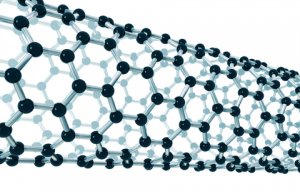
Innovation leads to new generation of nanotextiles
"Imagine plugging a USB port into a sheet of paper, and turning it into a tablet computer." Â It might be a stretch, but ideas like this have researchers at North Carolina State University examining the use of conductive nanocoatings on simple textiles - like woven cotton or even a sheet of paper. "Normally, conductive nanocoatings are applied to inorganic materials like silicon. If we can find a way to apply them to textiles - cheap, flexible materials with a contorted

7th June 2011
Innovation in Textiles
|
Raleigh, NC

"Imagine plugging a USB port into a sheet of paper, and turning it into a tablet computer." It might be a stretch, but ideas like this have researchers at North Carolina State University examining the use of conductive nanocoatings on simple textiles - like woven cotton or even a sheet of paper.
"Normally, conductive nanocoatings are applied to inorganic materials like silicon. If we can find a way to apply them to textiles - cheap, flexible materials with a contorted surface texture - it would represent a cost-effective approach and framework for improving current and future types of electronic devices," says Dr. Jesse Jur, assistant professor of textile engineering, chemistry and science, and lead author of a paper describing the research.
Using a technique called atomic layer deposition, coatings of inorganic materials, typically used in devices such as solar cells, sensors and microelectronics, were grown on the surface of textiles like woven cotton and nonwoven polypropylene, the same fabric that goes into reusable grocery store bags.
"Imagine coating a textile fabric so that each fibre has the same nanoscale-thick coating that is thousands of times thinner than a human hair - that's what atomic layer deposition is capable of doing," Jur says. The research, done in collaboration with the laboratory of Dr. Gregory Parsons, NC State Alcoa Professor of Chemical and Biomolecular Engineering, is said to show that common textile materials can be used for complex electronic devices.
As part of their study, the researchers created a procedure to quantify effective electrical conductivity of conductive coatings on textile materials. The current standard of measuring conductivity uses a four-point probe that applies a current between two probes and senses a voltage between the other two probes.
However, the researchers say, these probes were too small and would not give the most accurate reading for measurements on textiles. In the paper, the researchers describe a new technique using larger probes that accurately measures the conductivity of the nanocoating. This new system is said to give researchers a better understanding of how to apply coatings on textiles to turn them into conductive devices.
"We're not expecting to make complex transistors with cotton, but there are simple electronic devices that could benefit by using the lightweight flexibility that some textile materials provide," Jur explains. "Research like this has potential health and monitoring applications since we could potentially create a uniform with cloth sensors embedded in the actual material that could track heart rate, body temperature, movement and more in real time. To do this now, you would need to stick a bunch of wires throughout the fabric - which would make it bulky and uncomfortable.
"In the world of electronics, smaller and more lightweight is always the ideal. If we can improve the process of how to apply and measure conductive coatings on textiles, we may move the needle in creating devices that have the requisite conductive properties, with all the benefits that using natural textile materials affords us," Jur says.
A paper describing the research is published in the June issue of Advanced Functional Materials. Fellow NC State researchers include Parsons, post-doctoral researcher Christopher Oldham, and graduate student William Sweet. Funding for the study came from the Department of Energy and the Nonwovens Cooperative Research Center.
Source: NCSU

Business intelligence for the fibre, textiles and apparel industries: technologies, innovations, markets, investments, trade policy, sourcing, strategy...
Find out more